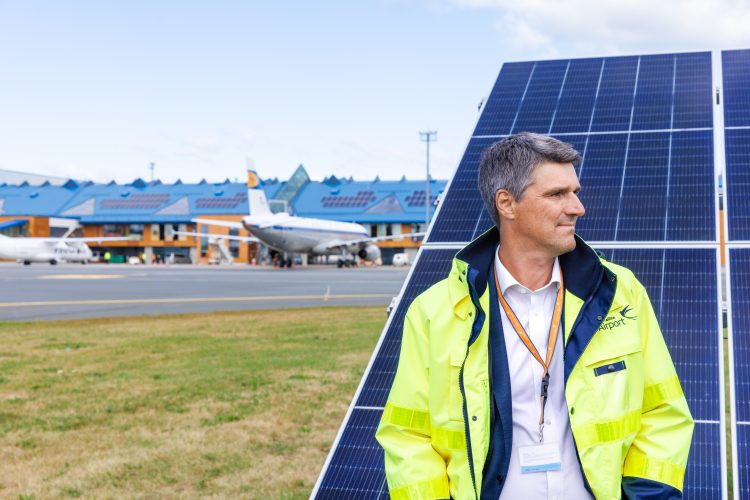Tallinn Airport reduces carbon footprint by 25% in past three years
- Like
- Digg
- Del
- Tumblr
- VKontakte
- Buffer
- Love This
- Odnoklassniki
- Meneame
- Blogger
- Amazon
- Yahoo Mail
- Gmail
- AOL
- Newsvine
- HackerNews
- Evernote
- MySpace
- Mail.ru
- Viadeo
- Line
- Comments
- Yummly
- SMS
- Viber
- Telegram
- Subscribe
- Skype
- Facebook Messenger
- Kakao
- LiveJournal
- Yammer
- Edgar
- Fintel
- Mix
- Instapaper
- Copy Link
Posted: 11 May 2023 | International Airport Review | No comments yet
Tallinn Airport believes that companies that fail to reduce their environmental impact by 2030 will be left out of the game.


How Tallinn Airport are reducing their carbon footprint. CREDIT: TALLINN AIRPORT
The green movement has often been thought of as an expensive and time-consuming process, with the benefits only becoming apparent in the distant future. However, there can be no denying the changes and the importance of taking action now to prevent further damage to the planet. Tallinn Airport believes that companies that fail to reduce their environmental impact by 2030 will be left out of the game.
Tallinn Airport has been focusing on green topics for the last couple of years and today, can already highlight the first achievements and the clear reduction of CO2 emissions. They are leading the way of making sustainable transitions whilst being a role model to others in Estonia and abroad.
Carbon emissions have decreased by 25%
Last year, carbon footprint was reduced by a quarter compared to 2019, largely thanks to the steps taken in 2022.
Electricity consumption accounts for the largest share of carbon emissions, which is why the airport decided to start building solar parks at airports across Estonia in 2020 and invested €3 million in them in the last three years. Today, the parks in Tallinn alone produce on average 29% of the electricity the airport consumes, and this year parks across Estonia will produce up to 40% of the electricity the airport consumes. By 2030, it is hoped Tallinn Airport will be producing more electricity than they use!
In addition to reducing carbon emissions, the airport have proven that sustainability can be profitable. Land use options at the airport may be limited, but the solar farms not only reduces carbon footprint and adds value to land, but also helps cut costs. Last year, nearly €400,000 was saved on electricity bills, and the airport have built parks on six and a half hectares of land where nothing else could be built.
As the airport has a lot of premises that need to be heated and the emissions this causes are among the highest, Tallinn Airport also considered it important to introduce a more environmentally friendly alternative for heating. Last November, the airport switched from gas to district heating in Tallinn, which helped reduce carbon footprint by around 20% a year. Based on our results for Q1 2023, the CO2emissions from heating alone decreased by 75%.
Tallinn Airport are also continuing to modernise technology in order to make the servicing of aircraft and movement within the airport environmentally friendly. Last year the airport increased the fleet of electric scooters and the first electric cars being used for getting around the airport since January this year.
But the airport are also looking for solutions to reduce their technological footprint. For example, since April the Neste filling station at the airport has been offering diesel fuel made of renewable materials, which is a great alternative to traditional fossil fuels and helps reduce CO2 emissions considerably – in the day-to-day operation of the airport, by using fuel made by renewable materials, Tallinn reduces their annual carbon emissions by approximately 80%, i.e. by more than 965 tons, which is 2.6 tons less CO2 per day.
The airport have signed up to the Airport Carbon Accreditation programme, in which they earned a Level 3 international carbon accreditation certificate in the end of 2022. Achieving that was very important and also a clear sign that everyday actions and steps taken to protect the environment have paid off. In order to move to the 3+ level they set about establishing a system last year, which they started implementing this March and which will enable them to simply and effectively gather data about their partners’ carbon emissions.
Related topics
Airport leadership, Economy, Emissions, Social responsibility, Sustainability, Sustainable development


















